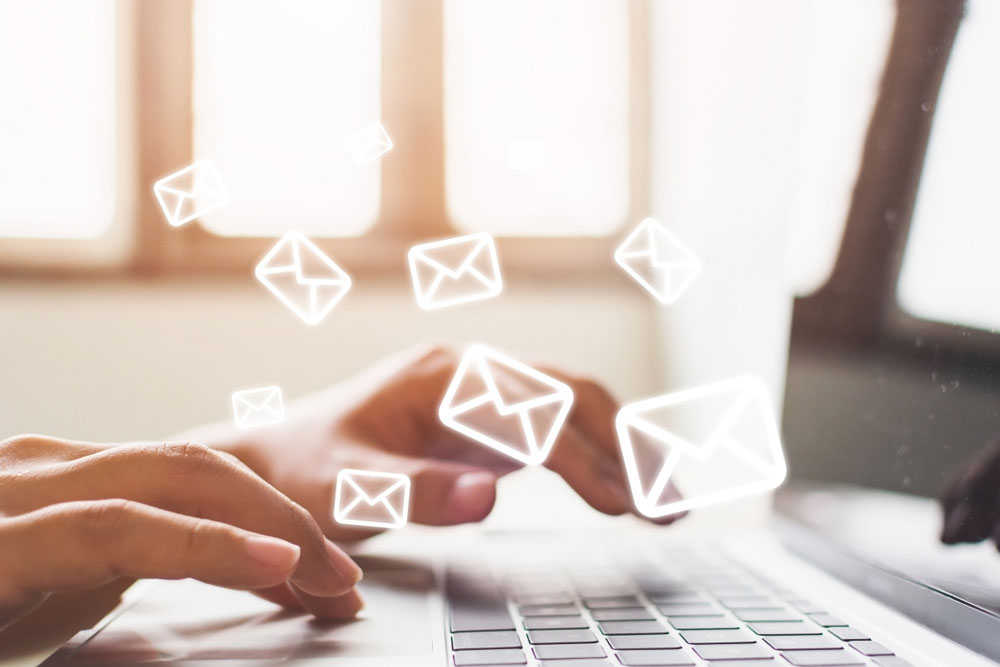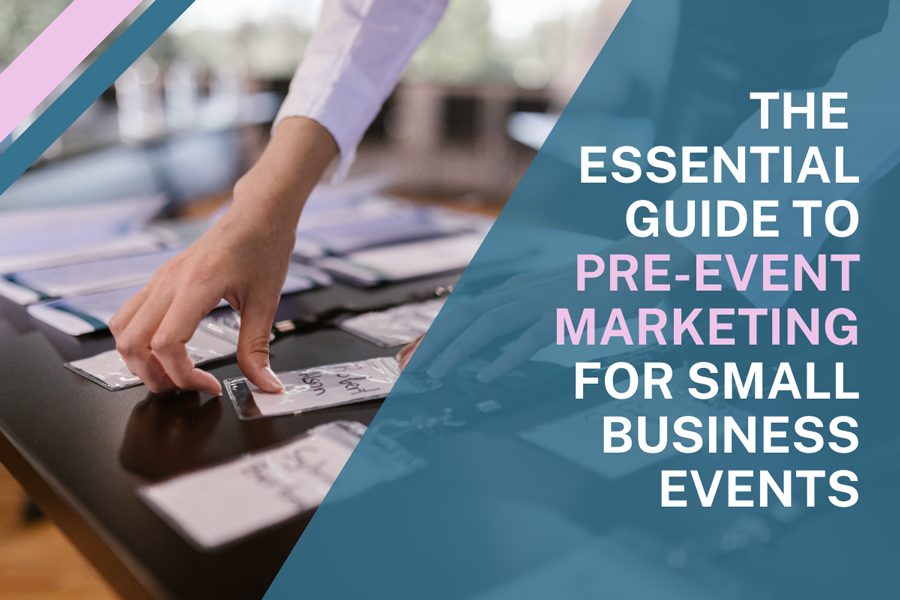Events are powerful. They build community, spark conversations, and create lasting impact.
But here’s the catch: the success of your event doesn’t start on the day. It starts weeks before, with the steps you take to get the right people registered, excited, and ready to show up. That’s where pre-event marketing for small business events makes all the difference.
This guide breaks down the essentials of event marketing:
- Capture registrations with the right tools.
- Design landing pages that persuade people to commit.
- Keep your event top of mind with simple email workflows.
- Decide whether to charge or make your event free.
Think of it as your practical playbook to make sure your event is full of the right people. Not empty seats.
Why pre-event marketing is critical
Think about the last event you attended. Chances are, you didn’t just stumble across it. You:
- Saw a post or an ad.
- Clicked a landing page.
- Registered online.
- Got a confirmation email.
- Received reminders and teasers that built excitement.
Without those touchpoints, you may not have turned up. And this is why pre-event marketing for small business events is so critical.
Fact: According to Eventbrite, 70% of an event’s success is determined by pre-event activity. And free events that don’t use reminders can see no-show rates of up to 50%.
For purpose-driven businesses, pre-event marketing is also where you can share your mission, set expectations, and build trust. It’s not just about filling seats — it’s about inviting the right people into your story.
Read More: Is your event attracting the right audience?
Step 1: Decide if your event should be free or paid
Before you launch your event, you’ll need to make an important choice: will your event be free or paid?
This decision shapes everything from how you promote the event to the type of audience you’ll attract. It also influences how committed people feel, and ultimately how many show up on the day.
To help you decide what’s right for your event, we’ve compared some pros and cons of free and paid formats.
| Free Events | Paid Events | |
| Pros |
|
|
| Cons |
|
|
Hybrid Event Pricing
A hybrid approach sits between free and fully paid events. Instead of being entirely open or entirely ticketed, you give attendees options.
For example, you might keep the main entry free to encourage wider reach whilst also offering a paid VIP tier with extras like recordings, backstage access to speakers or exclusive pre-/post- event functions for further relationship building.
This balance allows you to stay accessible while still creating value and commitment.
When offering VIP tier, ensure the added value enhances the experience without isolating standard attendees. Perks like exclusive content, reserved seating or event networking work best when they feel like an upgrade, not a divide. Keep the overall event inclusive so every guest feels part of the same community.
Grab our free Event Marketing Bundle which includes a questionnaire to help you narrow down whether your event should be free or paid.
Step 2: Choose the right registration tool
Your registration process is the “front door” of your event. If it’s clunky, confusing, or doesn’t inspire confidence, potential attendees will drop off.
What a good registration tool should do:
- Be easy to use: Simple forms that don’t overwhelm.
- Capture useful data: Beyond name and email, you might ask about dietary needs, accessibility or even professional interests.
- Send automated confirmations: People should feel instantly reassured that they’re registered.
- Integrations with email or CRM systems: So you can send follow-ups without extra admin.
The right tool saves you time and reduces admin headaches.
Checklist: Registration Tool Must-Haves
✅ Customisable form fields
✅ Branded confirmation emails
✅ Data export for follow-up
✅ Mobile-friendly design
Here are a few we recommend depending on your budget and goals.
Eventbrite:
Well known, trusted, great for reach. Fees apply if you sell tickets.
Ticket Tailor:
UK-based, low fees, and ideal for budget-conscious organisers.
Bizzabo:
More advanced, best if you need strong analytics or branding options.
Step 3: Event landing pages
Your event landing page is where interest turns into commitment. It’s not enough to have a date and time. People need to know why attending matters.
What to include
- Start with a headline that sells the value: “Grow your local network and discover sustainable business ideas” is stronger than “Networking Event 2025.”
- Include event details: Time, place, agenda highlights, cost.
- Bring it to life with strong visuals: Photos of past events, speaker headshots, or imagery that reflects your values.
- Keep your CTA clear: One big “Register Now” button. Don’t distract with multiple links.
Tools to try:
SplashThat
Excellent for visually branded pages.
WordPress + The Events Calendar
Perfect if your website already runs on WordPress.
HubSpot Landing Pages
Advanced workflows if you’re using HubSpot.
Want to know more about the elements to include for a high-converting sales page? Read Unlock Event Success: The must-have elements for a high-converting sales page

Step 4: Build an email workflow to nurture attendees
Once someone registers, your job is to keep them excited until the day. Without reminders, people forget or lose interest. That’s why a simple email sequence is one of the most effective parts of pre-event marketing for small business events.
Suggested Workflow
- Send a welcome email (immediately): Confirm their place, thank them, and explain what to expect. This reassures them their registration was successful and sets the tone for your communication.
- Value Led Email (2–3 weeks out): Focus on building excitement. Share what they can look forward to by attending. The goal here is to hype them up and strengthen their decision to attend.
- Logistics Email (1 week out): Provide all the practical details attendees need. Such as parking, directions, public transport. This removes uncertainty and helps them feel prepared.
- Reminder Email (24 hours before): Keep it short, upbeat and encouraging. Including the start time, venue reminder and a “we can’t wait to see you” message.
Checklist: Pre-Event Email Sequence
✅ Send confirmation email within 5 minutes of registration
✅ Schedule at least 3 touchpoints before the event
✅ Mix practical info with inspirational content
✅ Include social sharing links
Email Marketing Platforms that work:
Mailchimp
User-friendly, integrates with Eventbrite, strong automation.
MailerLite
Affordable and simple for smaller teams.
HubSpot
Great for larger teams that need segmentation and workflows.
Step 5: Market your event on social media and beyond
Once your landing page is live, it’s time to get the word out.
Social media is one of the most effective ways to reach the right people. Whether you’re building awareness organically or boosting your reach with paid promotions.
| Channel / Tactic | How to use it | Tips |
| Facebook and Instagram |
|
Be consistent. Post updates, countdowns and behind-scenes content. |
|
Leverage your network. Ask colleagues and speakers to share. | |
| Messaging and Direct Outreach (ideal for community-based events) |
|
Use messaging sparingly and thoughtfully. Personal invites can feel warm and effective, but mass-spamming can damage trust. |
Paid vs Organic: Organic posts help you connect authentically with your audience, but event a small paid budget can boost visibility. Paid ads can go a long way in targeting a local or niche audience.
Using Video to build trust
Video is one of the most powerful tools for event marketing. Short clips grab attention, showcase energy, and make your event feel real.
Consider:
- Create teasers clips: Quick introductions to speakers, agenda highlights, or venue tours.
- Add social proof: Share testimonials or clips from past events to build credibility and show what people can expect.
- Build momentum with countdown content: Post reminders at 2 weeks, 1 week, and a few days before to keep momentum.
Don’t Forget Your Future Events
If budget allows, hire a photographer or videographer for your event. Even if it’s your very first event, professional footage and photography will be invaluable for promoting your next one. Social proof!
High-quality visuals become part of your long-term content library and make your event marketing far more effective.
Best practices for organisers
- Lead with your values: Use registration and emails to highlight your commitment to sustainability, accessibility, or community.
- Keep it human: Write emails as if you’re speaking directly to your attendee.
- Segment where possible: Tailor content for different groups (e.g. sponsors vs attendees).
- Automate wisely: Free up your team by scheduling reminders and nurture emails.
- Track success metrics: Don’t just count attendees. Look at registrations, email open rates, and click-throughs to measure impact.
Final Thoughts
Your event’s success isn’t decided on the day, it’s built in the weeks leading up to it.
By using the right tools, creating a compelling landing page, and keeping communication clear and consistent, you’ll not only fill the room. Most impportantly, you’ll also deliver on your purpose: creating meaningful, values-led experiences.
That’s the power of pre-event marketing for small business events. It ensures the right people show up, ready to engage, connect and leave with lasting impact.
The Psychology of a Great Event: What Makes People Remember?
Let’s face it – most events blur together. You attend, you smile, you sip the coffee, and then…...
Unlock Event Success: The must-have elements for high-converting sales page
If your event is packed with purpose, passion, and potential, but your ticket sales aren’t...
Launch without launching – the soft launch approach
The prospect of launching a new service, programme, or course can be overwhelming for many...



